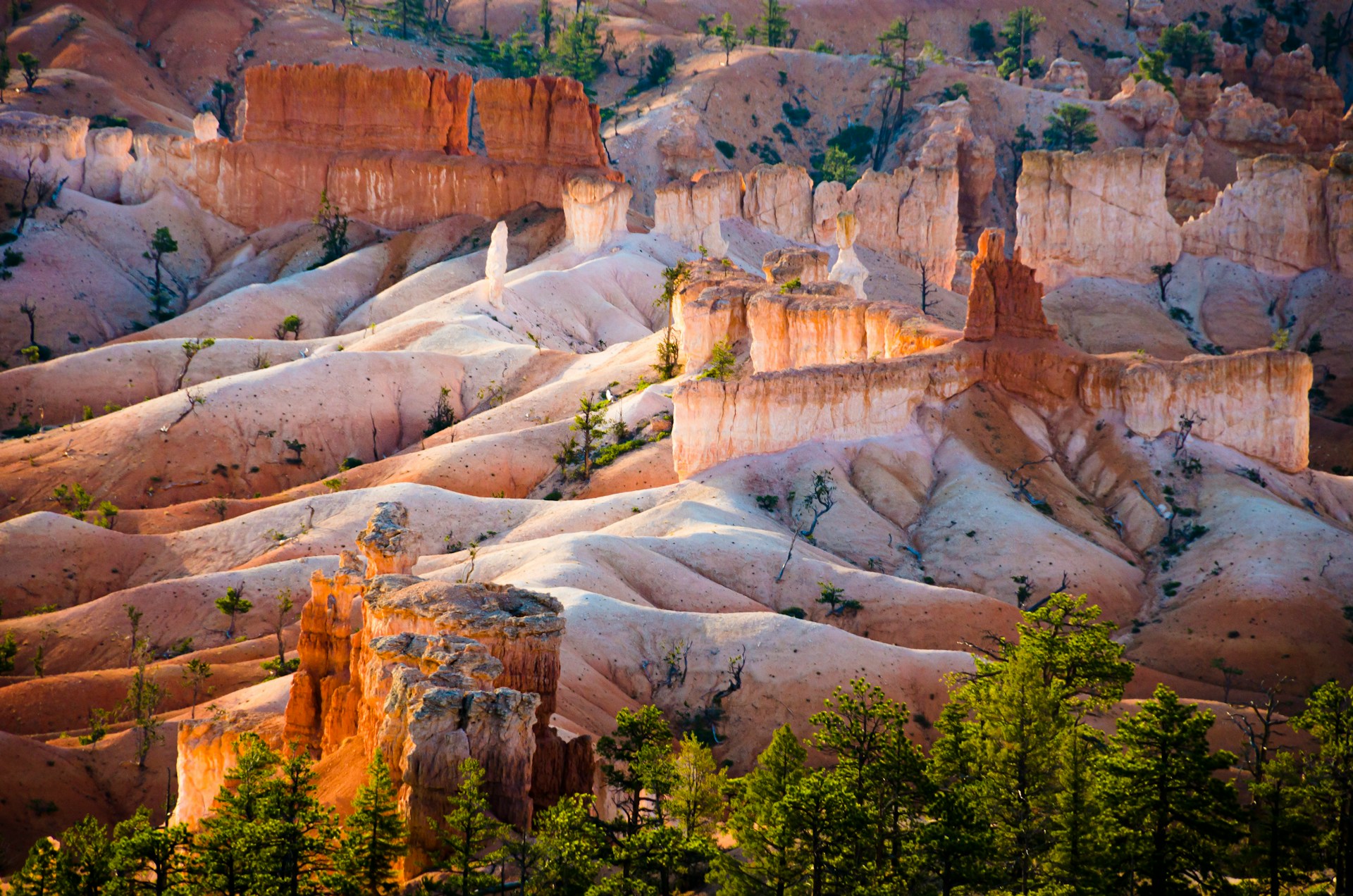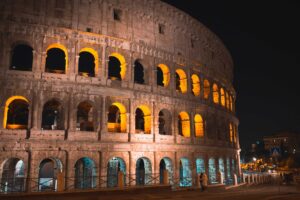If you’re a nature lover, adventure seeker, or just someone who wants to explore some of the most jaw-dropping landscapes on Earth, Utah should be at the top of your travel list. From the otherworldly rock formations of Arches National Park to the stunning canyons of Zion, Utah offers a perfect blend of hiking, scenic drives, and outdoor exploration.
So grab your hiking boots and get ready for an epic 5-day adventure!
Itinerary Snapshot
- Duration: 5 Days
- Route: Salt Lake City → Moab → Arches National Park → Canyonlands National Park → Bryce Canyon → Zion National Park
- Estimated Budget: $1,000-$1,500 (excluding flights)
- Best Time to Visit: Spring (April to May) and Fall (September to October) for mild temperatures and fewer crowds
Essentials to Prepare Before You Go
Before you hit the road, here are a few essential things to get ready:
- Flights: Most visitors fly into Salt Lake City International Airport (SLC), which is well-connected to major cities across the U.S. From there, you’ll either rent a car or drive your own vehicle to start your Utah adventure.
- Travel Insurance: Always a good idea, especially if you’re planning on hiking or doing other outdoor activities. It’s best to have coverage for medical emergencies and trip cancellations.
- Passes: Purchase a National Parks Annual Pass (around $80) if you’re visiting multiple parks. It gives you access to over 2,000 national parks and public lands in the U.S.
- Local SIM or Data: If you’re traveling internationally, you can get a local SIM card at the airport or buy one when you arrive in Utah. Many parks may have limited service, but staying connected in towns is usually no problem.
- Car Rental: Renting a car is essential for getting around in Utah, as many of the parks and attractions are spread out. A 4×4 is recommended if you’re venturing off-road or into remote areas.
Day 1: Salt Lake City – The Gateway to Utah
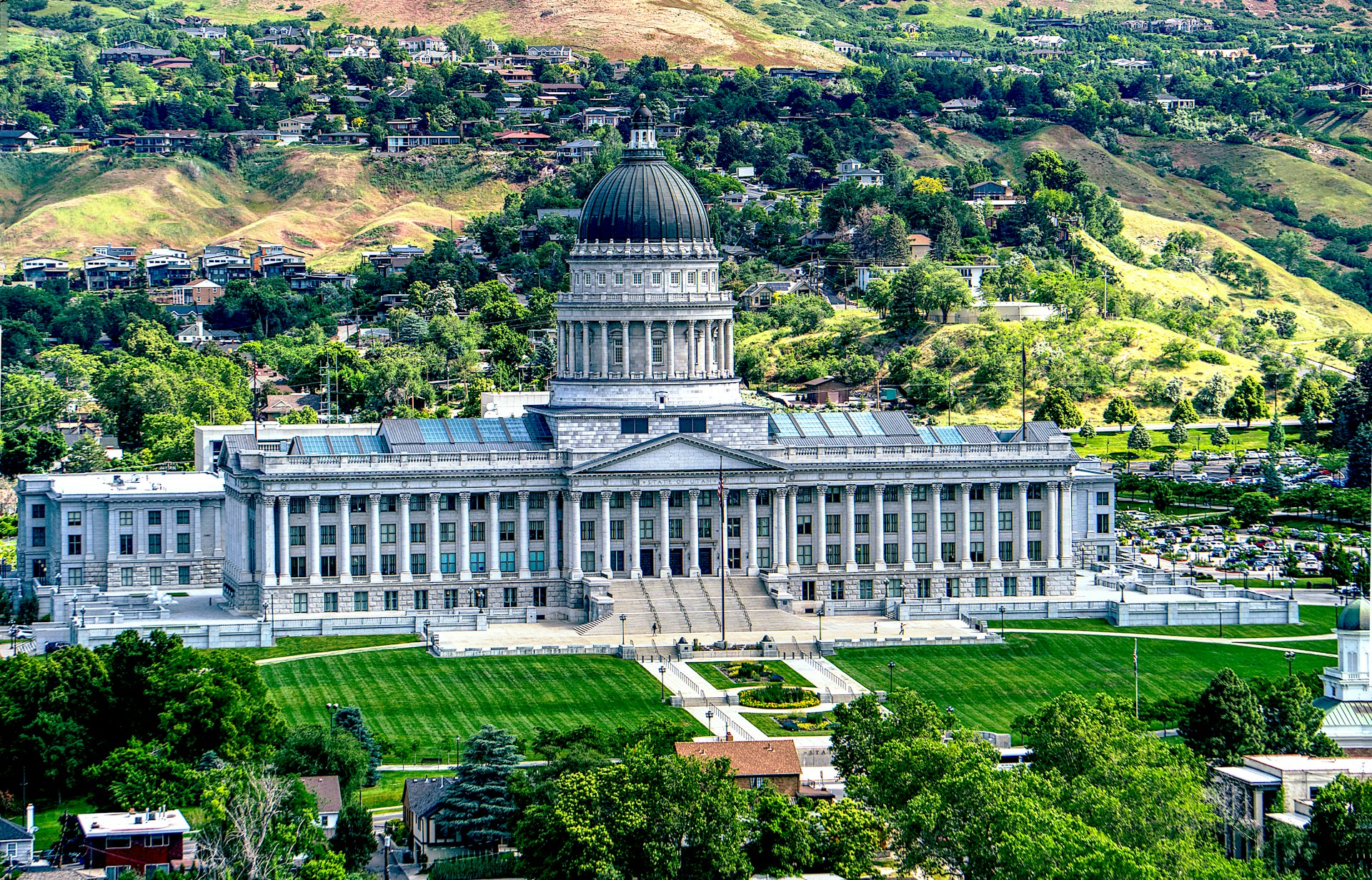
Morning: Salt Lake City Highlights
Your adventure begins in Salt Lake City. Start your day with a visit to Temple Square—the heart of the city and home to the stunning Salt Lake Temple. The square is peaceful and beautiful, and you can enjoy a free tour provided by the local volunteers who can share interesting facts about the city’s history and the Mormon faith. Afterward, head over to The Utah State Capitol for panoramic views of the city.
Did You Know? Salt Lake City is known for having a saltwater lake (the Great Salt Lake) just to the west of the city, and it’s the largest saltwater lake in the Western Hemisphere!
Afternoon: Exploring the Outdoors
After soaking in the history, it’s time to embrace nature! Head to Antelope Island State Park (about 45 minutes from downtown). Here, you can hike up to the top of Frary Peak for incredible views of the Great Salt Lake, or if you’re into wildlife, look for bison roaming freely on the island. Be sure to stop by the Historic Fielding Garr Ranch and learn about the area’s past.
Highlight: Be on the lookout for bison! Antelope Island is one of the best places to see these majestic animals up close.
Pro Tip: Bring plenty of water and sunscreen, as the sun can be intense, even in spring and fall.
Evening: Dinner and Relaxation
As the sun sets, make your way to The Roof Restaurant for dinner. Located on top of the Joseph Smith Memorial Building, it offers breathtaking views of the city skyline and the mountains. You can enjoy an upscale dinner, and the menu features everything from fresh seafood to locally sourced meats.
Extra Tip: If you’re craving something more casual, head over to Red Rock Brewing for a laid-back vibe and delicious craft beers.
Day 2: Moab – Gateway to the National Parks
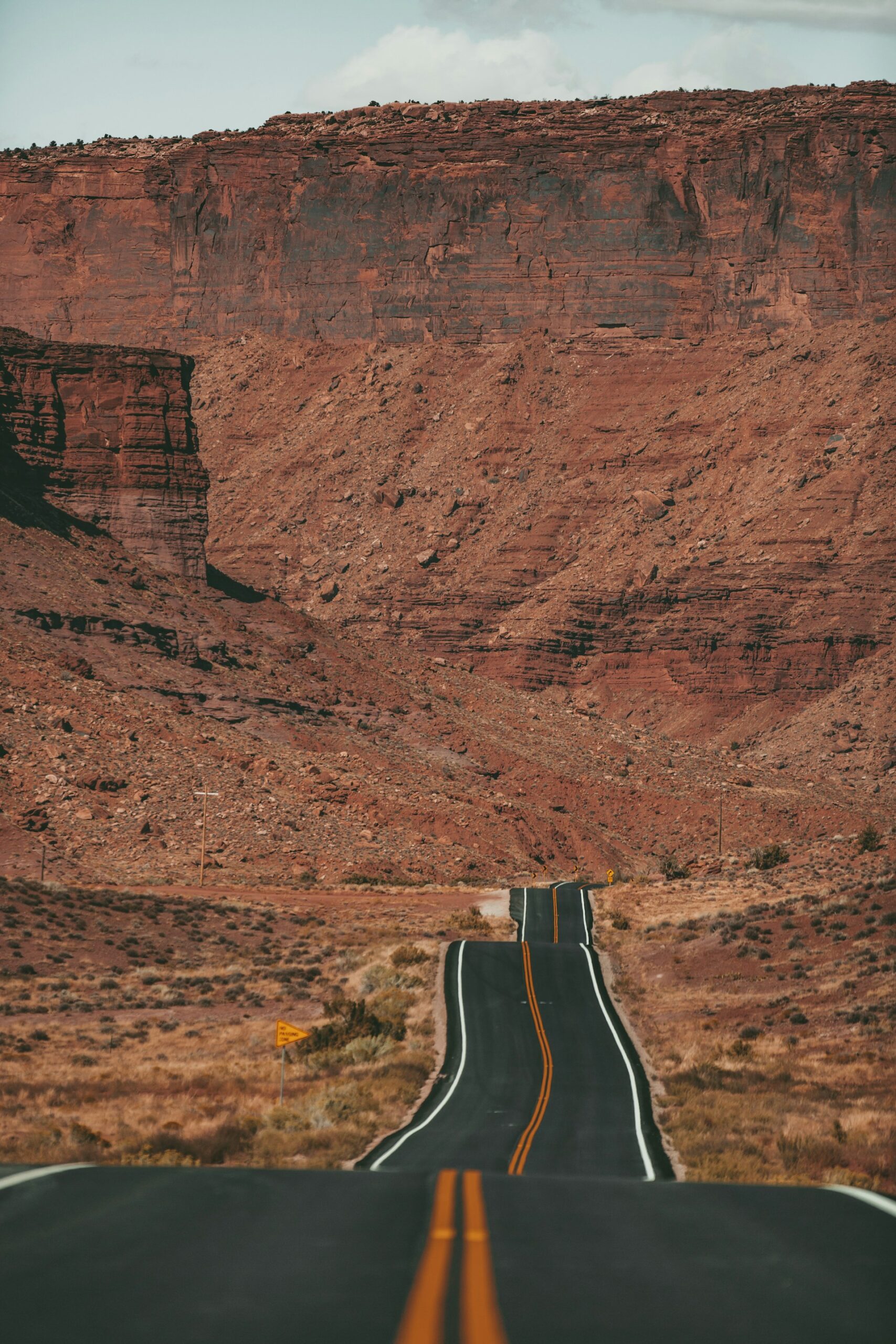
Morning: Road Trip to Moab
Wake up early and start your scenic drive to Moab, the adventure capital of Utah. The drive is about 4 hours, so pack some snacks, enjoy the views, and get ready for a full day of exploring. When you arrive, grab a quick bite at Milt’s Stop & Eat, a classic roadside diner famous for its burgers and shakes.
Fun Fact: Moab is the perfect base for visiting Arches National Park and Canyonlands National Park, which are both just a short drive away.
Afternoon: Arches National Park
In the afternoon, head to Arches National Park to marvel at its iconic sandstone arches. Delicate Arch is the park’s most famous, and though it’s a bit of a hike, the view is worth every step. If you’re short on time or don’t want to do a long hike, try the Windows Section, which features several stunning arches easily accessible by a short walk.
Highlight: If you can, take the Park Avenue hike—a moderate 2-mile trail that offers fantastic views of towering sandstone formations.
Bonus Tip: If you’re visiting in the summer months, arrive early to beat the crowds and the heat.
Evening: Sunset at Arches
Stick around to catch a magical sunset at The Fiery Furnace. The light at dusk makes the red rocks glow, and it’s one of the best spots for photos.
Afterward, head to Downtown Moab for dinner. Try The Broken Oar for amazing barbecue or Zax Restaurant for an incredible pizza.
Day 3: Canyonlands National Park & Dead Horse Point
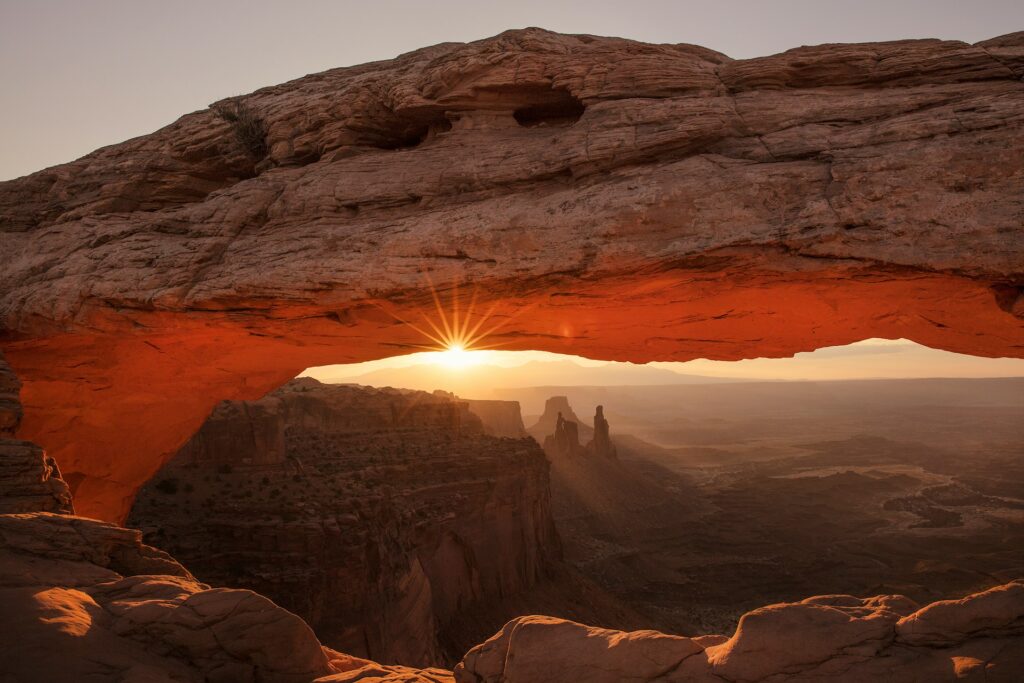
Morning: Canyonlands Adventure
After breakfast, make your way to Canyonlands National Park (about 40 minutes from Moab). Start your visit at Island in the Sky, where you’ll get sweeping views of the vast canyons and rock formations. Take the Mesa Arch Trail, an easy 0.5-mile hike that will take you to one of the most photographed spots in the park.
Highlight: The Grand View Point offers breathtaking views of the Green River and the surrounding canyons.
Afternoon: Dead Horse Point State Park
In the afternoon, head to Dead Horse Point State Park, just a short drive from Canyonlands. The views from the point are absolutely stunning, and the park itself is a quieter alternative to the more popular national parks.
Fun Fact: The point got its name because wild horses used to be corralled on the narrow mesa, and many of them were left to die without escape.
Evening: Relax in Moab
After an action-packed day, return to Moab to relax. Treat yourself to a nice meal at La Hacienda for some delicious Mexican food.
Day 4: Bryce Canyon – Hoodoos and Scenic Drives
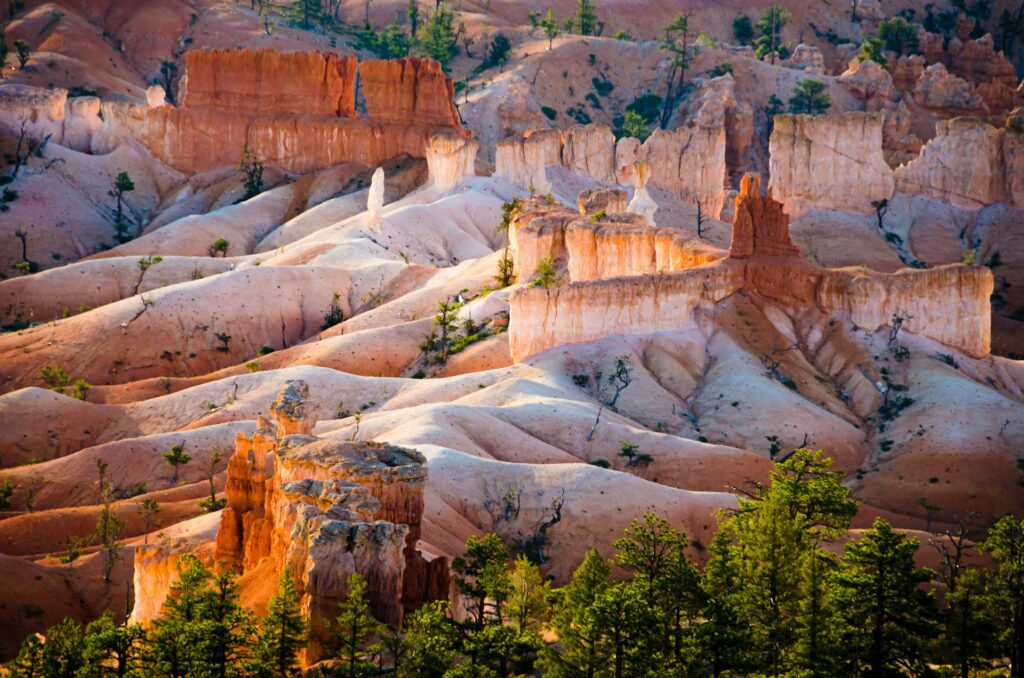
Morning: Drive to Bryce Canyon
After breakfast, start your scenic drive towards Bryce Canyon National Park (approximately 3 hours). As you approach the park, the landscape changes dramatically, and you’ll be greeted by Bryce’s signature hoodoos—tall, thin spires of rock created by erosion.
Did You Know? Bryce Canyon is not technically a canyon but a series of giant amphitheaters.
Afternoon: Bryce Canyon Exploration
Head straight to Bryce Point for panoramic views of the amphitheater and its famous hoodoos. If you’re up for it, take the Navajo Loop Trail, a 1.3-mile hike that takes you down into the canyon, giving you a closer look at the rock formations.
Bonus Tip: The Sunset Point is a fantastic place to watch the colors of the canyon change as the sun sets.
Evening: Stargazing at Bryce Canyon
Bryce Canyon is one of the best places for stargazing in the U.S., and after dinner, head to the Bryce Canyon Observatory to look at the stars through telescopes.
Day 5: Zion National Park – The Final Adventure
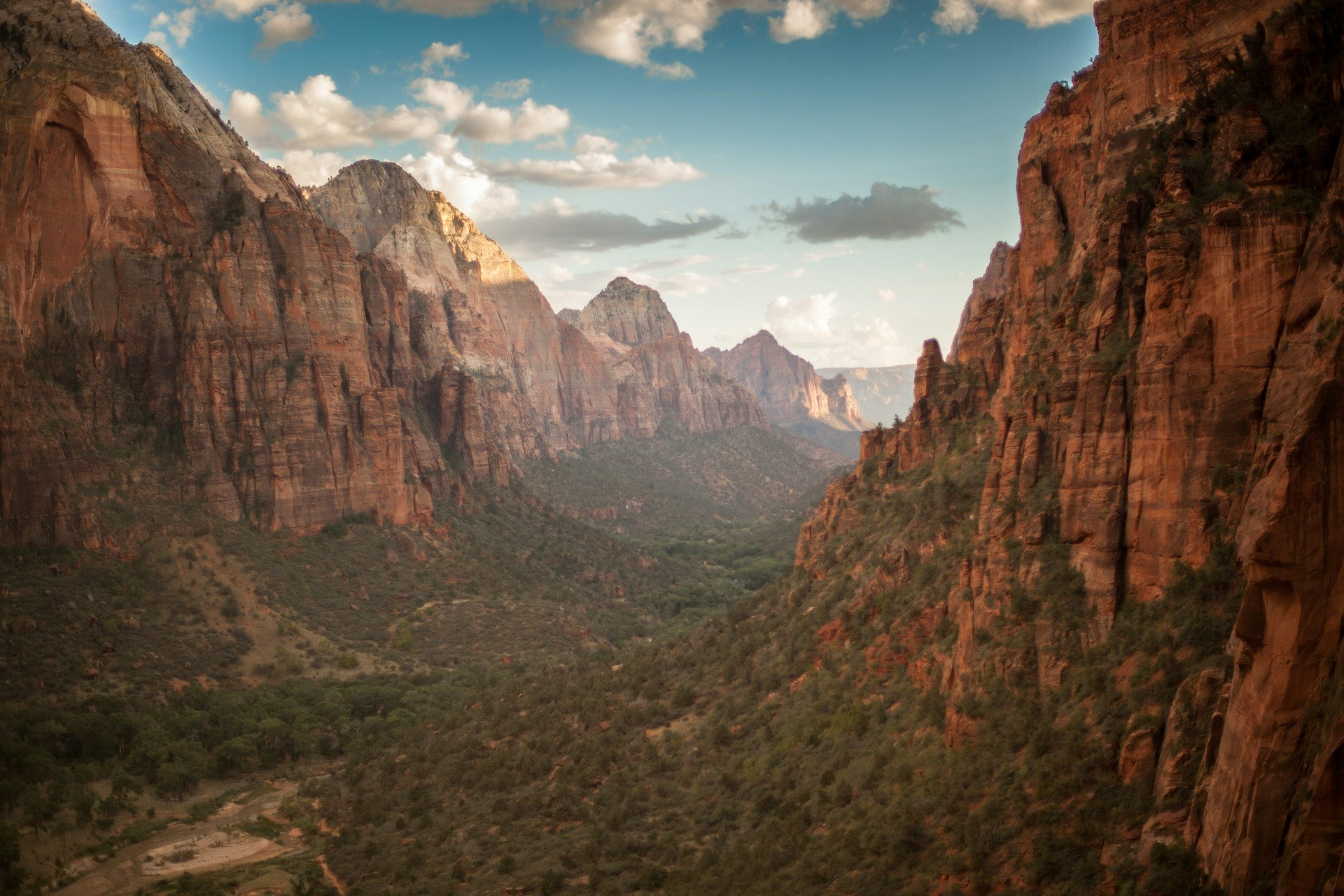
Morning: Drive to Zion
On your final day, head to Zion National Park (about 1.5 hours from Bryce). Start with a visit to the Zion Canyon Visitor Center to pick up maps and get the lay of the land.
Afternoon: Hiking in Zion
Zion offers some of the best hikes in the country. If you’re up for a challenge, tackle the famous Angels Landing—it’s a strenuous hike, but the views from the top are out of this world. For something a bit easier, try the Emerald Pools Trail, which is shorter but still offers beautiful scenery.
Highlight: Don’t miss the Zion Shuttle ride through the canyon to see some of the park’s most iconic landscapes.
Evening: Sunset at Zion
End your trip with a sunset at Canyon Junction, where the sun casts beautiful light on the surrounding cliffs. It’s the perfect way to say goodbye to Zion.
What to Eat in Each Region
Utah isn’t just about stunning landscapes; the food scene is equally impressive, and every region has its own delicious offerings you won’t want to miss. Here’s a breakdown of what to eat in each part of your trip:
- Salt Lake City: Salt Lake City has a surprisingly vibrant food scene that mixes local flavors with international cuisine.
- Utah Scones: These aren’t your typical scones. They’re thick, fried dough served with honey butter, and they’re a must-try for breakfast or as a snack. Find them at places like The Dodo or Café Rio.
- Green Jell-O: It’s a Utah tradition! The state consumes more Jell-O per capita than any other, and you can try it in a variety of ways. Try it with whipped cream or as part of a retro “Utah Jell-O Salad” at local diners.
- Fry Sauce: This Utah-born concoction is a must when dipping your fries or burgers. It’s a mix of ketchup and mayo with a few secret spices. Find it at Crown Burgers for a taste of local fast food.
- Moab: Known for its adventurous spirit, Moab serves up hearty meals perfect after a long day of hiking.
- Buffalo Burger: This lean, delicious alternative to beef is one of Moab’s signature dishes. Try it at Milt’s Stop & Eat, a classic roadside diner known for its mouthwatering burgers and shakes.
- Desert Mesquite Grilled Chicken: Mesquite wood gives meat a smoky, earthy flavor that pairs perfectly with grilled chicken. Head to The Broken Oar for a plate of this smoky delight.
- Fresh Salsas & Guacamole: Given Moab’s proximity to the Southwest, it’s no surprise that they serve some of the freshest and most flavorful salsas and guacamole around. Stop by Zax Restaurant & Watering Hole to try them with chips and a cold drink after a day of hiking.
- Bryce Canyon: With its mountain air and proximity to the desert, Bryce Canyon has some great spots for local delicacies.
- Fresh Trout: Given its higher elevation, the Bryce area is known for fresh trout from nearby streams. Stop by Bryce Canyon Lodge for a fantastic trout dinner, often served grilled or with almond butter.
- Bison Steak: Bison is leaner and sweeter than beef, making it a great option to try when visiting the area. Ruby’s Inn offers a fantastic bison steak that’s tender and flavorful.
- Cowboy-style Steak and Ribs: The cowboy heritage of the area means you can find hearty portions of steak and ribs. Grab a plate at The Bryce Canyon Pines for a true taste of the Wild West.
- Zion: Zion National Park is not only about breathtaking views but also about fueling up for your next adventure. The food around Zion is as hearty as it is delicious.
- Zion Canyon Chicken Salad: A local favorite, this salad is loaded with grilled chicken, fresh greens, nuts, and a tangy dressing. Perfect for a light yet satisfying lunch. Find it at Zion Lodge or The Spotted Dog Café.
- Barbecued Meats: Zion is known for delicious, smoky barbecue, especially at Oscar’s Café. Try a pulled pork sandwich or their ribs for a satisfying meal after a hike.
- Southwestern-inspired Dishes: With a blend of southwestern flavors, you can expect dishes like chili rellenos, enchiladas, and tacos made with local ingredients. The Whiptail Grill serves up fantastic Mexican cuisine with a Zion twist.
- Homemade Pie: You can’t leave Zion without trying a piece of homemade pie, often made with seasonal fruit. Visit The Zion Canyon Brewing Co. for a slice of their famous peach pie.
Bonus Tip: Always check out the local farmer’s markets in towns like Moab or Springdale for fresh, locally grown produce, homemade jams, and unique artisan food products to take home as souvenirs.
Where to Stay: Recommended Hotels and Areas

Choosing the right place to stay can make or break your experience in Utah. From luxurious resorts to cozy, budget-friendly motels, here’s a more detailed breakdown of where to stay in each location to ensure you have a restful and memorable experience.
- Salt Lake City:
As Utah’s largest city, Salt Lake City offers a variety of accommodation options that cater to different budgets and preferences.- Kimpton Hotel Monaco: For a luxurious stay, this boutique hotel offers elegant rooms with stylish decor and exceptional amenities like a fitness center, a trendy restaurant, and evening wine receptions. Its central location is ideal for exploring downtown, and it’s just a short drive from attractions like the Utah State Capitol and Temple Square.
- Radisson Hotel Salt Lake City Downtown: This is a great mid-range option, offering comfort and convenience at a reasonable price. With spacious rooms, a heated outdoor pool, and proximity to the city’s top attractions, it’s perfect for travelers who want a balance between quality and affordability.
- The Little America Hotel: If you’re looking for something a bit more budget-friendly yet still comfortable and well-located, this hotel offers great rates, large rooms, and easy access to downtown Salt Lake City’s restaurants, shopping, and attractions.
Pro Tip: If you’re flying in, staying near the airport can be convenient, especially if you’re renting a car and plan to head straight out to the parks. The Grand America Hotel is a fantastic luxury option near the airport with exceptional service.
- Moab:
Moab is the perfect base to explore both Arches and Canyonlands National Parks, and it offers a wide variety of lodging options.- Hoodoo Moab: This chic, modern hotel offers high-end amenities with a laid-back, outdoor vibe. The stylish rooms come with patios or balconies where you can unwind after a long day of hiking. The pool area is also fantastic for relaxing, and it’s just a short drive to the Arches National Park entrance.
- Moab Valley Inn: A great budget option that offers clean, spacious rooms and a nice pool for a quick refresh after a day of exploration. Its location just outside downtown Moab makes it easy to get to the town’s restaurants, shops, and other attractions.
- Under Canvas Moab: For a unique, upscale glamping experience, try Under Canvas, where you can stay in luxurious safari-style tents with comfy beds, private bathrooms, and amazing views of the surrounding desert. It’s an unforgettable experience for those who want to get close to nature without sacrificing comfort.
- Red Cliffs Lodge: Just a 20-minute drive from Moab, this rustic, lodge-style accommodation is located along the Colorado River. It offers a stunning location, and some rooms come with full kitchens, which is great for long stays or those looking to cook their own meals.
Extra Tip: Moab can be busy, especially during peak season, so make sure to book accommodations well in advance.
- Bryce Canyon:
Staying near Bryce Canyon gives you easy access to the park’s awe-inspiring viewpoints and trails.- Best Western Plus Bryce Canyon Grand Hotel: Located just outside the park entrance, this hotel offers spacious rooms and a great buffet breakfast. It’s a fantastic choice if you want a balance of comfort and proximity to the park. The outdoor pool is perfect for cooling off after a long day of hiking.
- Bryce Canyon Pines: If you’re on a budget, this cozy motel provides affordable rooms with a welcoming atmosphere. Located a short drive from the park, it’s a great choice for those looking for a no-frills place to rest. Be sure to stop by the restaurant for some hearty home-cooked meals, including their famous pies.
- The Lodge at Bryce Canyon: For a more immersive experience, consider staying inside the park at the Lodge. It offers rustic, historic accommodations, and you’ll be able to step out your door and immediately begin exploring the park’s stunning landscapes.
Highlight: The Lodge at Bryce Canyon is one of the few places where you can stay right inside the park, allowing you to experience the canyon’s beauty at sunrise or sunset when the crowds are smaller.
- Zion:
Zion National Park is one of Utah’s most popular parks, and staying near the park ensures you can get an early start on your hikes.- Zion Lodge: If you want to stay right inside Zion National Park, Zion Lodge is the perfect choice. You’ll be surrounded by incredible views of the canyon’s red rock cliffs, and it’s the only hotel located within the park itself. The rooms are rustic but comfortable, and you can even enjoy the park’s famous The Grotto Trail right from your doorstep.
- Cliffrose Lodge & Gardens: Located just outside the park’s south entrance, Cliffrose Lodge offers luxurious rooms and stunning views of Zion Canyon. The lodge has a beautiful garden, outdoor pool, and hot tub, which make it a great place to relax after a long day of hiking. The location is also ideal for easy access to Zion’s shuttle buses.
- Cable Mountain Lodge: If you prefer a condo-style stay, Cable Mountain Lodge offers spacious suites with full kitchens. Located right by the Zion Canyon Scenic Drive, you can easily walk to the shuttle stop, making it convenient for those who want to explore the park without worrying about parking.
- Springdale: For more budget-friendly options, check out the town of Springdale, just outside Zion. Hotels like Bumbleberry Inn offer affordable rates, comfortable rooms, and a charming small-town vibe. The shuttle to the park entrance stops right in front, so it’s a convenient choice for those on a budget.
Pro Tip: During peak season (spring to fall), Zion can get very busy, so booking your accommodations early is essential, especially if you want to stay within the park.
No matter where you choose to stay, Utah offers a wide variety of accommodations that allow you to rest and recharge while exploring its natural wonders. Whether you’re looking for luxury, rustic charm, or budget-friendly options, you’ll find the perfect place to call home during your adventure!
Essential Apps for Traveling
When you’re on a Utah road trip, you’ll want to make sure you’re fully equipped with some useful apps to help you navigate, plan, and discover all the amazing things Utah has to offer. Here’s an expanded list of essential apps that will help make your adventure smoother and more enjoyable.
- Google Maps: This app is your go-to for directions and navigation. Whether you’re driving through winding mountain roads or exploring national parks, Google Maps will get you where you need to go. It’s also helpful for real-time traffic updates, finding nearby gas stations, and locating scenic viewpoints along the way.
Bonus Tip: Download offline maps ahead of time for areas with limited cell service, like in remote desert landscapes or some national parks. - Maps.me: If you’re going to be off the beaten path, Maps.me is a lifesaver. This app allows you to download offline maps, which is great for areas where your cell service might drop, like the backroads of Arches or the remote canyons of Zion. You can also mark your favorite spots, like the trailheads or hidden scenic spots, so you never miss out on something awesome.
Fun Fact: Maps.me also works in places where even Google Maps struggles, like in deep canyons or off-road trails, making it perfect for hikers and adventurers. - Google Translate: If you’re traveling internationally or you want to make sure you’re communicating clearly in local shops or with park rangers, Google Translate can be your best friend. It supports text translation and even has a real-time camera translation feature, so you can instantly translate road signs or menus. It’s a great way to ensure that language barriers never get in your way.
- XE Currency Converter: This app is particularly useful if you’re traveling internationally or if you’re just curious about currency exchange rates. XE Currency allows you to keep track of current exchange rates, which is super helpful for budgeting your trip when paying for goods, services, or gas.
- Booking.com: Finding and booking accommodations in Utah is simple with Booking.com, especially since there’s such a wide variety of places to stay, from motels to luxury resorts. You can filter by price, rating, and even amenities like free breakfast or pet-friendly rooms. It’s also great for last-minute bookings if your travel plans change or if you’re looking to extend your stay.
Pro Tip: If you’re traveling during the busy season (spring and fall), booking your accommodation in advance can save you a lot of time and stress. Some popular places like Moab and Zion get filled up quickly, so use Booking.com to secure your spot. - AllTrails: For hiking lovers, AllTrails is an essential app. With this app, you can search for the best trails in each national park and beyond, read reviews, and even download offline trail maps for areas with limited cell service. AllTrails gives you information about trail difficulty, length, and elevation gain, making it easier to plan hikes that match your fitness level and time constraints.
Pro Tip: Check for trail updates before you go, as conditions can change rapidly in Utah’s national parks. In certain seasons, some trails may be closed for maintenance or due to weather conditions. - Yelp: For finding great places to eat or local hidden gems, Yelp is always a good resource. It’ll give you user-generated reviews on restaurants, cafes, and diners in your area, making it easier to find top-rated spots for a meal after a long hike. Especially in small towns like Moab or Springdale, Yelp helps you discover places that might not show up on traditional tourist lists.
Highlight: In places like Salt Lake City and Moab, you’ll find a lot of great local eateries with diverse options, so checking Yelp for a foodie adventure is highly recommended. - Roadtrippers: If you’re doing a classic Utah road trip, Roadtrippers is a must-have app for discovering attractions along your route. From quirky roadside stops to famous landmarks like Delicate Arch in Arches, it’ll help you make the most of your drive. The app even allows you to map out your entire road trip and find points of interest, scenic routes, or places to stop for a quick photo op.
Bonus Tip: If you’re not familiar with the routes in Utah, this app is a great way to build out your itinerary by locating gas stations, diners, and scenic points along your drive. - National Park Service App: If you’re visiting the national parks, this app is essential for your trip. It gives you up-to-date information on park hours, shuttle schedules, trail maps, and safety guidelines. You can also learn about special programs, ranger talks, or events happening during your visit. It’s perfect for planning your park days and ensuring you don’t miss anything important.
Did You Know?: The Zion National Park Shuttle system is a lifesaver, especially during the busy season. The National Park Service app provides you with the latest schedules and real-time shuttle status, which is crucial for minimizing wait times. - Weather.com: In Utah, the weather can be unpredictable, especially in higher elevations or remote desert areas. Weather.com gives you accurate, up-to-date weather forecasts and alerts for each location, helping you pack accordingly and plan your outdoor activities. It’s crucial to know the weather, especially if you’re planning on hiking in areas like Bryce Canyon or Zion, where conditions can shift quickly.
Pro Tip: Check the weather every day, especially for the mountain regions like Bryce Canyon, as temperatures can vary dramatically from day to night.
By having these apps on your phone, you’ll be well-prepared to navigate the scenic highways, discover hidden gems, and have a smooth and enjoyable adventure in Utah. From real-time directions to local food recommendations, these apps will help you make the most out of every day of your trip.
Flexible Budgeting and Travel Tips
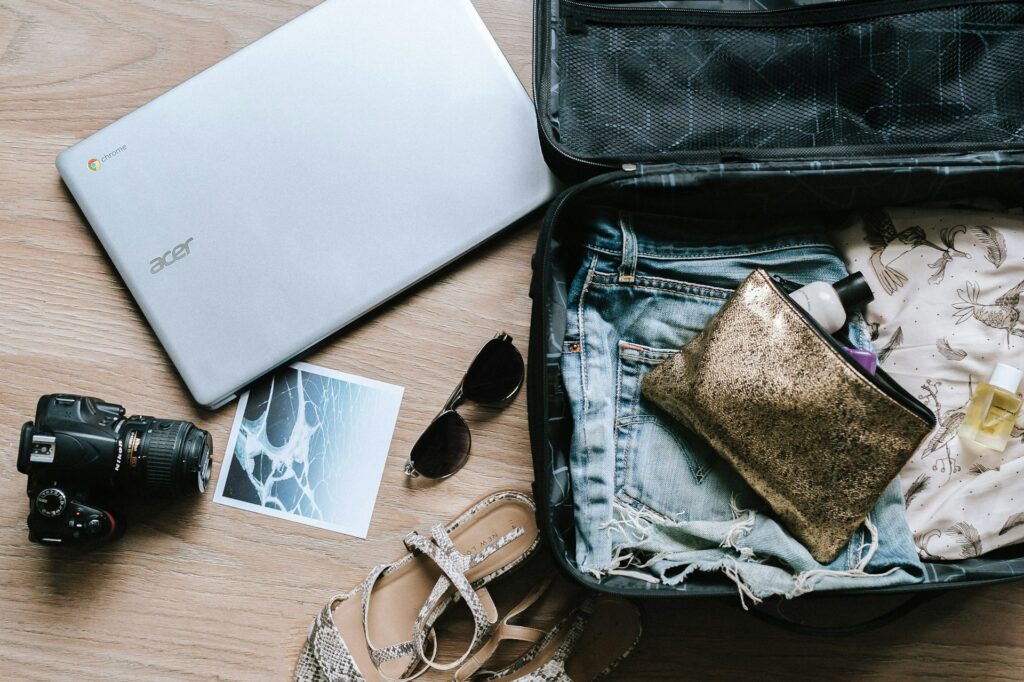
When planning your trip to Utah, it’s essential to budget wisely to ensure you get the best experience without breaking the bank. Here’s a detailed guide to help you with the most common travel expenses, whether you’re on a tight budget or ready to splurge a little more.
Accommodation
Utah offers a wide range of accommodation options, from basic motels to high-end resorts. Prices can vary greatly depending on the location, season, and type of stay. Here’s a breakdown:
- Budget Accommodations: Motel prices in smaller towns or near national parks can be as low as $50 per night. These are often no-frills options, but they get the job done if you’re just looking for a place to rest. Look for places like Super 8 or Motel 6 for affordable rates.
- Mid-range Accommodations: For a more comfortable stay with additional amenities, expect to pay between $100 and $200 per night. Options like Holiday Inns or smaller boutique hotels in areas like Moab or Springdale offer great value.
- Luxury Accommodations: If you’re looking for luxury with scenic views, there are high-end resorts and lodges that can cost anywhere from $200 to $300+ per night, especially in popular spots like Zion or Bryce Canyon. Places like The Lodge at Bryce Canyon or Cliffrose Lodge & Gardens in Zion offer upscale stays with prime locations.
Pro Tip: Book your accommodations early, especially during peak seasons (spring and fall), to get the best deals. Some of the most popular spots in Utah like Moab or Zion can fill up quickly.
Meals
The cost of food in Utah varies depending on where you’re eating. Here’s a breakdown to help you plan:
- Casual Dining: Expect to pay around $10-$20 for a simple meal at local diners, cafés, or food trucks. You’ll find lots of delicious meals like burgers, sandwiches, or tacos that hit the spot after a long hike. Local favorites like Café Rio or Milt’s Stop & Eat in Moab offer delicious, affordable meals.
- Fine Dining: For a more upscale dining experience, you’ll likely spend $25-$50 per person at higher-end restaurants. In Salt Lake City, you can enjoy delicious farm-to-table options like The Copper Onion or Finca for a tasty dinner in a cozy, upscale atmosphere.
- Snacks and Quick Bites: You can easily pick up snacks or a quick lunch at convenience stores or markets for $5-$10. If you’re heading into the parks for a hike, pack your own lunch—sandwiches, fruit, and trail mix are great budget-friendly options.
Bonus Tip: For budget travelers, try visiting local farmers’ markets or grocery stores to buy fresh produce and make your own meals. This is a great way to save money while still enjoying local flavors.
Car Rentals
Renting a car is a great option for getting around Utah’s vast national parks and scenic byways. Prices typically range from $50 to $100 a day, depending on the type of car and rental agency. Here’s a breakdown:
- Economy Cars: Typically priced between $50 and $70 per day. These are perfect for solo travelers or couples, and they can handle the highways and park entrances with ease.
- SUVs and Larger Vehicles: Prices for these cars range from $80 to $100 per day. If you’re planning to travel with a group or need more space for gear, an SUV is a great option, especially for the rugged terrain around some parks.
- National Park Annual Pass: If you’re planning on visiting multiple parks, consider purchasing an Annual National Park Pass for $80. It gives you unlimited access to all national parks for one year, which can save you a lot of money in entrance fees (typically $30 per park).
Pro Tip: Renting a car allows you to explore Utah at your own pace, but don’t forget to account for gas costs. Gas prices can fluctuate, so budget a little extra for longer road trips.
Flights
The cost of flights to Utah can vary depending on where you’re flying from and when. On average, domestic round-trip flights range from $300 to $500. Here are some tips to save on flights:
- Booking in Advance: Try booking your flight a few months ahead to get the best rates. Early morning or late-night flights are usually cheaper.
- Flying into Salt Lake City: Salt Lake City International Airport is the main hub for flights into Utah and typically has the best options and prices. From there, you can rent a car or take a shuttle to your next destination.
- Alternative Airports: If you’re visiting more remote areas like Moab or Zion, you can fly into nearby airports like Cedar City or Grand Junction (Colorado), though these may have fewer flight options and could be more expensive.
Highlight: Consider using flight comparison tools like Google Flights or Skyscanner to find the best deals and set price alerts for your dates.
Packing Essentials
Utah’s weather can be unpredictable, especially if you’re visiting national parks or heading into the desert. Packing the right gear will ensure you’re comfortable, no matter where your adventures take you.
- Clothing: Layers are key in Utah. During the day, temperatures can soar, especially in desert parks like Arches or Canyonlands, but it can drop dramatically at night. Bring a light jacket or fleece, even in summer.
- Daytime: Lightweight clothing like breathable shirts, shorts, and a hat to protect from the sun.
- Nighttime: A warmer jacket or sweater, as it can get chilly, especially in higher elevations like Bryce Canyon.
- Footwear: Good hiking shoes are a must, especially if you’re exploring Utah’s many trails. Comfortable walking shoes are also important for urban areas and attractions like Salt Lake City.
- Sun Protection: Sunscreen, sunglasses, and a wide-brimmed hat are essential, especially in the summer when the sun can be intense. Don’t forget to bring chapstick with SPF to protect your lips!
- Hydration: Utah’s desert landscapes can be dry, so carrying a refillable water bottle is crucial. Many national parks have water refill stations at visitor centers, so stay hydrated during your hikes.
Fun Fact: Utah is known for its high elevation and dry climate, so even if it’s sunny and warm, it’s easy to get sunburned, so always apply sunscreen!
Other Tips for Budget Travel
- Tours and Activities: Many parks offer free ranger-led tours or low-cost guided hikes. If you’re on a budget, check with the local visitor center to see what’s available. These tours often provide a great way to learn more about the area without spending extra money.
- Gift Shops and Souvenirs: Keep an eye on prices when purchasing souvenirs at park gift shops. Consider buying small, inexpensive items like postcards or locally made art instead of pricey items like t-shirts and mugs.
Bonus Tip: Be on the lookout for package deals or discounts for multiple parks. If you’re visiting multiple national parks, some places offer combo tickets or discounts for staying longer.
Final Thoughts
Utah is one of those places where every turn reveals something new and stunning. Whether you’re hiking through slot canyons, gazing at giant arches, or soaking in the beauty of towering cliffs, the Beehive State will leave you in awe.
With a mix of adventure, stunning landscapes, and great food, this 5-day itinerary will make your trip unforgettable. So pack your bags, rent that car, and get ready to experience one of the most beautiful parts of the United States!
Also Read This:
- 30+ Amazing Things to do in Salt Lake City You Will Never Forget!
- 14 Days Italy and Switzerland Itinerary Guide for Unforgettable Adventure
- Best Time to Visit Rome: Unlocking the Eternal City’s Charms
- 27 Things to Do in Scotland: A Traveler’s Ultimate Guide
- The Ultimate 4 Days South of France Itinerary You Only Need!
- 7 Days Netherlands Itinerary | The Perfect Guide for Your Dutch Adventure
- 1 Week Denmark Itinerary | Explore the Land of Hygge!
- 10 Day Germany Itinerary | A Journey Through History, Culture, and Stunning Landscapes
FAQs for Traveling Utah
- Q: What’s the best time to visit Utah?
- A: Spring and fall offer mild weather and fewer crowds, making them the best times to visit.
- Q: Is it safe to hike in Utah’s national parks?
- A: Yes, but always take proper precautions. Carry plenty of water, wear sturdy shoes, and check trail conditions.
- Q: Do I need a 4×4 vehicle?
- A: While a regular car will get you to most spots, a 4×4 is recommended for some remote areas or off-road adventures.

